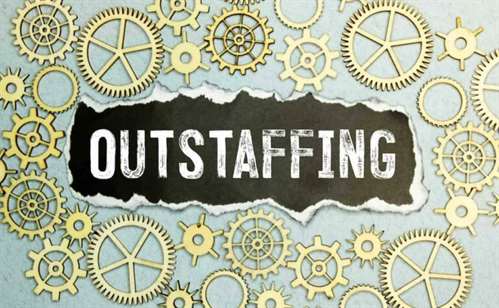Top 10 Features that You Should Add Into Your Restaurant App
In the diverse and expansive world of restaurant apps, numerous types cater to different needs, preferences, and operational facets of the restaurant business. Each type serves a unique purpose, offering specific features and benefits. Here, we explore the various types of restaurant apps available, with a spotlight on some renowned real-world examples.
Once the project specification, timeline, and budget have been agreed on, it’s time to start the development. After having their management team review the business process, many owners often decide that in addition to having customers order from their restaurant website, another helpful tool is needed. Usually, the right answer is to create mobile restaurant apps that will give customers another option to order food in a seamless and customer-centric manner. Once the mobile app has been launched, it is of great importance to measure how people react to it and analyze whether they have found it likable and easy to use. A competent development company will employ the services of Mobile App testers to test the features of the newly developed restaurant mobile app.
Loyalty, rewards and discounts programs
Understand the preferences, behaviors, and pain points of your target audience; decide whether your app’s main goal is to improve customer experience, streamline processes, or boost income. Finally, if you feel that you have enough resources and the return on investment will be favorable, it’s time to begin the restaurant app development process. All of the above restaurant app features are designed to serve customers and businesses, simultaneously.

A restaurant app offers you the flexibility to add the latest offerings and food items into the app. This feature is one of the remarkable features to run your business effectively. In this feature, you can quickly view your orders, deliveries, and payments on the dashboard and it will also assist you in managing your food delivery business. However, the tricky bit here is getting customers to adapt to this app idea of using several payment options from a single platform. A restaurant business needs to go mobile with essential features by keeping the user experience in mind.
Step 10: Collect & Analyze User Feedback
You might end up hitting the ceiling far too soon and would need to create an app from scratch. The app includes a database of all restaurants, cafes, and other dining locations nearby. Combined with geofencing, this app will help you attract new customers to your restaurant. The main secret to creating a successful restaurant app is knowing restaurant app builder the market state, key app types, and the major players. That’s why market and business research should be the number one step in the development process. Besides this, the reports and analytics feature of an online food delivery platform provides a detailed record of daily sales, daily online payment, and delivery person commission.

Reviewing order history
With this feature, users can always place the same orders just as their previous orders. By adding this feature in your app it will be helpful for costumes to place or check their previous orders and they just have to skip the procedure of searching dishes and menus. After the order placement, it’s a matter of waiting, but there is no need to make the wait unbearable for the users. Let them track the progress of their order and the location of delivery personnel in real time.
Order delivery
Only those requests must be included that promise a high ROI from the very beginning, or else the inclusion of those can be postponed for later. An application used for ordering food will definitely invite critiques and feedback from those happy as well as upset. So an analysis of the feedback gathered will play a big role in improving the live application.

All you need to do is visit the ‘Blink for Restaurant Page’- i.e. if it’s a food business that requires services on the get-go or Blink for Retailers page to get started. In this post, we will talk about some of the benefits of having your own branded restaurant app, the Pros of restaurant app features, and different types of restaurant apps to start with. OpenTable is a prominent app in this category, offering users the convenience of reserving tables at thousands of restaurants worldwide.
Identify Unique Benefits for Your Business with a Restaurant Mobile App
Upselling is the idea that you can tempt customers to purchase more than they initially intended by hinting toward better deals or combinations. First things first, you need to create a specific takeout and delivery menu. You can also make an interactive prototype of your app to review and test its usability using tools like InVision app. This will give you a better understanding of how the final result will look and feel (as well as help you pitch your idea to the investors before building an MVP). To make sure your app meets the demand, identify a specific sore point within your audience and target it. Otherwise, you won’t have a chance at competing with the established market players.
- Simple Android or iOS solutions can enhance customers’ experience and help with placing orders, reserving tables, connecting with suppliers, leaving tips, and many other things.
- When there is a feasibility to book a table for a suitable slot, the consumer feels free to finish other chores before they settle for their meal at their favorite restaurant.
- There are many features that help increase your ability to connect with your customers, but the best one is push notifications.
- Blink is an online ordering system for restaurants that enables restaurants to sell online.
- You can easily update users with their order status via push notifications and share the delivery partner’s details with this feature.
- However, the coin always has two sides, and it’s important not to be too pushy; otherwise, you risk annoying your customers.
The good news is that it’s easy and affordable for independent restaurants or small chains to create a restaurant app. Unfortunately, many independent restaurants and takeaways rely on third-party aggregator apps to provide some of the above features. A review and rating system is a great source of user feedback, both positive and negative.
Design a Seamless User-Friendly App
An online food tracking status feature allows users and admins to track the progress of their orders. The real-time progress of the food orders and the location of delivery personnel in real time assure the users of their orders and make the waiting process less tiresome. You can easily update users with their order status via push notifications and share the delivery partner’s details with this feature. A customer-centric business will always try to pay more attention to the carefully planned loyalty program.

To avoid massive overspending, we always recommend starting with an MVP – an app with the most basic functionality. This allows you to test how well your food delivery app will do among your existing and potential customer base and gather valuable feedback. From our mobile app development experience, the price for a high-quality MVP starts at $20,000. A restaurant menu app offers a digital interactive menu that users can access from their smartphones, as exemplified by Finedine. This restaurant application is a customizable SaaS solution for restaurant owners who want to digitize their ordering process and improve their customer experience. Even before you became interested in restaurant app development, you probably had used delivery apps to get meals and drinks from restaurants.
What would an app for your business look like? Schedule a demo to find out.
A Basic restaurant app will usually include the most essential features such as a simple user interface, menu display, order placement, and contact details. The purpose of such apps is to provide fundamental functionality, facilitating users with easy navigation and simple interactions. Based on your restaurant’s needs and your customers’ expectations, choose whether you want to create a food delivery app, a dine-in app, or a comprehensive restaurant management app. Developing a successful restaurant app necessitates the integration of various features that can cater to the diverse needs and expectations of users. These features should enhance usability, provide value, and offer a seamless and enriching user experience. Below are the main features that are fundamental to any restaurant app, each serving a unique purpose in improving interaction, operation, and user satisfaction.

0 comments